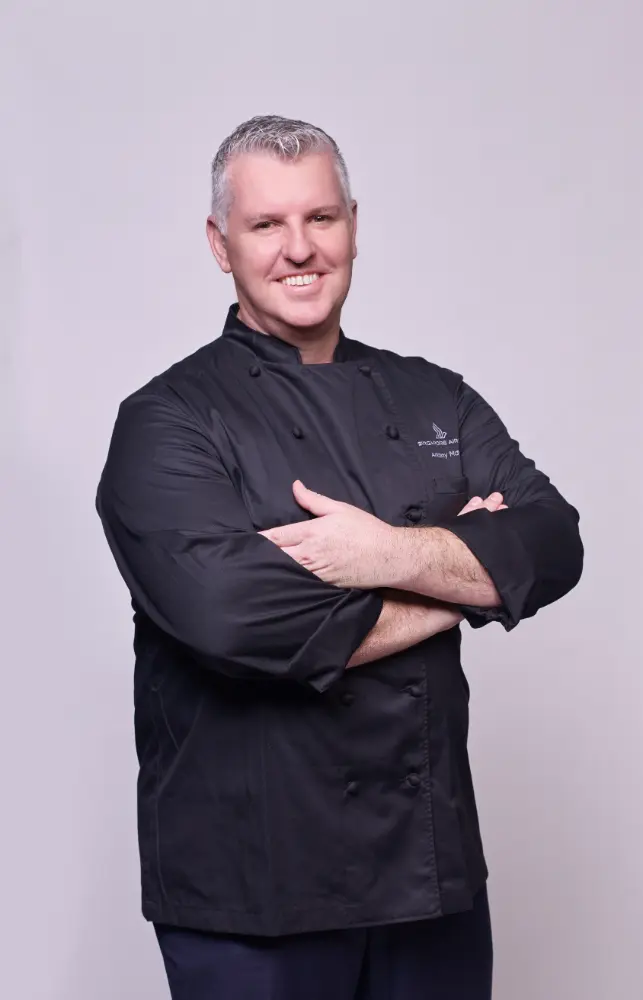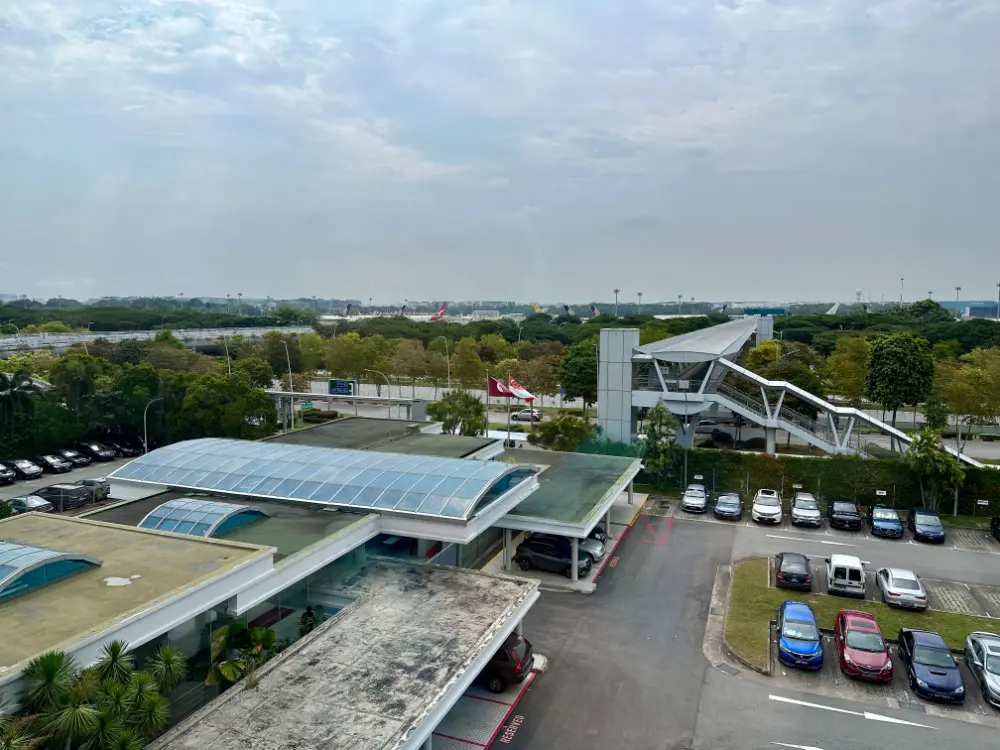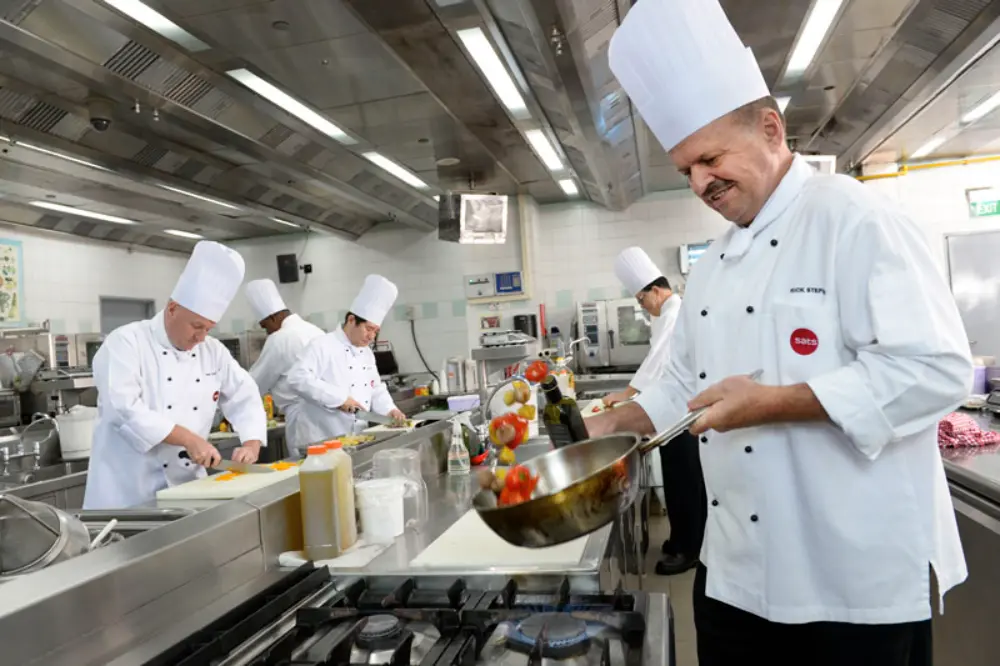
A POUR IN THE SKY
- Spirits
- |
- 24 June 24
- Priya Kumari Rana
Next time you fly Suites, First or Business on Singapore Airlines, you might be astonished at the impeccably curated wine list that’s on offer – from the majestic Krug and exclusive single-origin champagnes, to rare Burgundies from France and Shiraz from Australia. We take a look behind the scenes at SIA’s twice-yearly Wine Week, meet their wine experts, and discover what the fuss is all about.
 Singapore Airlines inflight service includes the most premium wines from France and Australia
Singapore Airlines inflight service includes the most premium wines from France and Australia
Sitting on board Singapore Airlines’ Suites, First Class, or Business Class, as you’re digging into your Lobster Thermidor, Singapore Chicken Satay with inhouse marinade made on a real charcoal grill, or a signature Osetra Caviar (with warm blinis, chives, egg condiments, sour cream, fresh lemon, served with a mother-of-pearl spoon), that you’ve no doubt ordered on the airlines’ Book The Cook service (online or on the app), you can enjoy a glass of Krug champagne, the best Burgundy from France, or the most refreshing Riesling from Australia. Behind each pour in the sky, lie months of preparation, tastings, and final selections, where three of the world’s foremost wine experts meet up in Singapore twice a year to create the airline’s highly awarded Cellar.
 Suites First and Business Class on Singapore Airlines - Lobster Thermidor
Suites First and Business Class on Singapore Airlines - Lobster Thermidor
What does it take for the World’s Best Airline to own the World’s Best Overall Cellar (it won the Gold medal by Cellars in the Sky, 2022, plus Gold medals for Best Business Class Sparkling and Best-presented First Class list in the 2023 Cellars in the Sky)? At the state-of-the-art, highly secure SATS Inflight Catering Centres 1 and 2 (which produce 125,000 meals daily for Singapore Airlines (SIA), British Airways, Quantas Airways, Cathay Pacific Airways, and others), we are privy to a unique event – the airlines’ famous Wine Week – when 1,500 labels are tasted by three experts (3,000-3,5000 bottles tasted in a year), out of which only 5% are selected to be served on board.
With such an ambitious wine programme, SIA had a total beverage budget of Singapore $36 million (alcoholic and non-alcoholic), in 2020. Out of this, Singapore $ 10-12 million is spent on champagne alone. Spends on wines are between 75-85% of the total budget, while the balance includes other spirits, a small category.
 Antony Mcneil
Antony Mcneil
“We serve around 1.2 million bottles of wine per year, in all our classes – from Suites, Business, First, Premium Economy, to Economy,” says Antony McNeil, Global F&B Director, Singapore Airlines. “We’re looking at large quantities of wine, but also small batch opportunities, rather than mass volume.” The bottles that will come under scrutiny at Wine Week come from wine suppliers whom the airline invites on an open market tender, setting certain criteria for submission, such as vintages (year), and appellation (region), and customer feedback. This is complemented by visits by Singapore Airlines’ three wine consultants to smaller maisons and domaines – wineries and vineyards across regions (like Old World wine growing Bordeaux or Burgundy), to procure small-batch wines. Once selected and procured, the wines are put into the airline’s pouring plan for the next 12-18 months.
 Wine consultants for SIA, from left to right, Michael Hill Smith, Jeannie Cho Lee, and Oz Clarke
Wine consultants for SIA, from left to right, Michael Hill Smith, Jeannie Cho Lee, and Oz Clarke
Tasting,Testing
Today, our three wine experts, consultants Michael Hill Smith (Australia’s first Master of Wine), Jeannie Cho Lee (Asia’s first Master of Wine), and Oz Clarke (one of the foremost authorities on wine), will be blind tasting neatly laid out rows of Australian Business Class Shiraz (with the bottle’s body and label covered with silver foil). All wines, those procured from tenders and small-batch growers, are put into categories beforehand – for which cabin class, red, white, sparkling. The consultants will taste each bottle over one week, on the Parker Rating system (from 50-100). So those that get 95-100 go into First Class, the spillover into Business Class, and 90-94 go into Business Class.
“We go through our tasting in silence, make our points, just as for an international wine show,” says Michael. “We then sit down, call the points, look at an agreement – as it’s a team decision, not a solo sport. We have a robust discussion, shortlist our wines, that we taste again sort the gravel from the gems. Finally, we come up with a decision. Then we open up the wines and see what they are. Of course, label perception is important. So if oen is a highly sought after artisanal wine, then the label is important, but primarily, it’s what’s in the glass.”
 The three wine consultants - Michael, Jeannie, and Oz, at work
The three wine consultants - Michael, Jeannie, and Oz, at work
“We have a category and need-based selection for the week,” says Jeannie. “We are buying bottles 6-12 months ahead. Since we do our tastings in the next six months, our supply is depleted, so we replenish it in time. Our buying process for a First-class Bordeaux or Burgundy (using special relationships to buy difficult to procure, rare wines), is different from the tender process we do for our Australian Shiraz.”
 Some of the wines served up in the sikes
Some of the wines served up in the sikes
The Best of Burgundy and Bordeaux
The three consultants have been going to Burgundy and Bordeaux in the last few years. Their Burgundy experience has been particularly rewarding, where they secured 54 Premier Burgundy labels last year, between reds and whites, including ‘small batch’ wines (2,000-3,000 bottles per supplier), from small, signature growers. Some of the labels include Domaine de Montille, Domaine Faiveley, Joseph Drouhin), and is today the world’s largest Burgundy cellar in the sky, from 33 Grand Cru Vineyards, and 535 Premier Cru Vineyards.
“Burgundy production has been impacted by the environment,” says Antony. “The supplies are smaller; the grapes are ripening quicker. We are interested in bottles from small signature growers, which we rotate frequently on board the aircraft. Our labels are not available for mass supply, providing a unique opportunity for customers to experience something in flight, they may not normally in a restaurant.” For its Bordeaux, SIA serves Second Growth wines in Suites and First Class (there are only 14 Chateaux in Bordeaux classified as Second Growth under the Grand Cru classification of 1855).
 The SATS buildings
The SATS buildings
Bring out the Bubby
With Krug Grande Cuvée as Singapore Airlines’ marquee champagne (offered in First Class and Suites), along with Taittinger Comtes de Champagne and a third artisanal champagne (since last June, there are now five new exclusive champagnes served, on a two-month rotation, such as Vilmart & Cie Grand Cellier d’Or 2018, Champagne Henri Giraud 2018).
The idea is to look at key boutique artisanal growers, and their prestige cuvées. “These are generally single-lot growers, with a very small number of wines,” says Antony. “No additional grapes are coming in – if you look at Krug, it only has 2-3 vineyards, producing champagne on-site. So the champagne has a very unique flavour based on its terroir; the effervescence dances off your tongue as you sip it.”
Although we do learn that when it comes to the final taste, there are pressurized cabins for food and beverage tastings at the SATS Inflight Catering Centre.
“The Krug is the king of champagne, in my view, powerful and fine,” says Michael. “But my personal favourite is the 2007 vintage Blanc des Millénaires by Charles Heidsieck, which is in the prime of its life, and it being poured in First Class.”
 Red or white, it’s what works up in the skies
Red or white, it’s what works up in the skies
A Red or a White?
“We always have to keep in mind what will work in the air,” says Oz Clarke, “Sometimes we think we have a tremendous wine, but it just won’t work in the air (due to the dryness inside cabins, one’s sense of taste and smell is altered). “Throughout the year, we try to make sure we cover what’s happening in the world of wine – from South America, South Africa, Bordeaux, Burgundy, and the south of France, to Australia and New Zealand. When we come together, we’ve had six months of experience, that we hope distills itself into making better decisions, for example, when it comes to a red Bordeaux for Business Class, a red Shiraz from Australia for Business Class, or a New Zealand Sauvignon.”
“This week we are tasting the Grüner Veltiner from Austria, as a category,” says Jeannie. “We’ve tasted more than two dozen Albariños from Spain, Chenin Blancs from South Africa, 40 different samples of rosé from Provence, Aix-en-Provence, and Bordeaux (France), which is a booming category the world over. We do anticipate and try to meet trends.”
But the airline knows its flyers have their favourites, so an Australian Shiraz is always a staple, a must-have, as is a Bordeaux red, or a Burgundy white, says Jeannie. So if there’s an area that needs a refresh, or an exciting area that people should be discovering, the consultants bring those in. Plus, Singapore Airlines rotate their wine list. What used to be done every 12 months, is now changed every 3-4 months.
And what kinds of labels does SIA stock in its cabinet in the sky? Anything from the aforementioned, plus something like a 2020 Riesling Kabinett from the Saar Valley, Germany (Von Hövel); a 2019 Tempranillo from Spain (Lleiroso); a 2021 Cabernet Merlot from France (Rare Vineyards); a 2019 Louis Jadot from France; a Chardonnay from Chile (Frontera); a 2022 Sauvignon Blanc from New Zealand (Martinborough).
 The SATS Kitchen Sommeliers in the Air
The SATS Kitchen Sommeliers in the Air
To make the task of wine serves and pairings flawless, SIA currently has over 130 trained Air Sommeliers (identifiable by the grapes on their customary SIA air crew badge, a mix of age and gender). These are crew who have been certified after a nine-month training programme. Some go on take the WSET level 1 and 2, and even level 3 to upscale themselves, and become Wine and Wake Masters. “We’re developing people, as they are company assets,” says an SIA spokesperson. “We invite wine masters, chateaux owners, and certified trainers during the programme.” The thing about an SIA Air Sommelier, is that you will never know you have one on your flight, until you board it!
“A lot of people want to drink first thing in the morning, to celebrate their trip,” says Michael. “We serve champagne in Suites, First, Business, Premium Economy, and in our Lounges. And they love it.”
 Suites First and Business Class - Chinese style cod wth fried rice
Suites First and Business Class - Chinese style cod wth fried rice
From the Chef’s Kitchen
There’s no wine without good food, so it makes sense that the top-of-the-line meals served in flight on SIA are backed by master chefs such as Georges Blanc from France, Matt Moran from Australia, Sanjeev Kapoor from India, Yoshihiro Murata from Japan, and Zhu Jun from China. You can pre-select your meal up to 24 hours before flying, with Book The Cook facility online at SIA to book yourself a meal – anything from a Kyo-Kaiseki Japanese fine dining concept of appetizers, and entrées served course by course on Wedgwood fine bone bhina in Suites and First Class, to Shahi Thali (Indian), and Hansik (Korean).
“The Beefsteak is an ever-green dish for First and Business Class,” says McNeil, “Plus you have from our Hawker Heritage dishes like Braised Chicken with Chilli Sauce, Singaporean Chicken Rice, healthy breakfast dishes like Spiced Buckwheat and Pumpkin Pancakes, or a Bak Chor Mee – a pork fat noodle, with crunchy dry sole, and mushrooms, which is a combination of a dish made by two famous Singapore hawkers.”
 Suites First Class and Business Class - Singpaorean Laksa
Suites First Class and Business Class - Singpaorean Laksa  Antony McNeil with some of the dishes served in First Class
Antony McNeil with some of the dishes served in First Class
FOLLOW US ON INSTAGRAM

Lifestyle Insider is a kind of junction point, connecting people with diverse interests that touch on the more luxurious aspects of lifestyle – fashion, design, travel, food and spirits, art, watches and jewellery, cars, yachts, and aviation, and technology. People today don’t fit into boxes and categories. In our individual ways, we are interested in diverse themes, products, and the challenges that face our world today. You will judge how well this effort of mine caters to your passions and proclivities.
Lifestyle Insider is a showcase of all that is beautiful and luxe. Behind every creation, is a designer, chef, entrepreneur, or a design maison. I have delved into my own appreciation for objetsde luxe that I have admired over the years – be it a love of fashion from the world’s top Parisian and Italian fashion maisons and their ’90s muses, or the care that goes into sari and Indian textile collections in my own family. Growing up on four continents, as the daughter of a former Indian Ambassador, I’ve seen a remarkable array of historic places and met a myriad people. My aim is to bring my world view into this website, a curation of what I find particularly stunning, unique, and newsworthy.
It’s an exciting time for brands all over the world. With change comes opportunity. With the global ‘reset’ and uncertainty on many fronts, there is a chance to write a new script. Let’s be those pioneers.
A bit about me:
A luxury and fashion journalist with 25 years of experience in publishing and magazine journalism, I have edited some of India’s top fashion and luxury magazines. I got my BA in Comparative Literature from UC Berkeley, and went on to receive my Master’s in English and French from the University of Strasbourg, France. I have also studied German and Film. I live in Gurugram, India, and look forward to once again exploring our world with a new-found freedom.
Priya Kumari Rana
Founder and EditorContact Us
Mail us @ lifestyleinsiderindia@gmail.com


